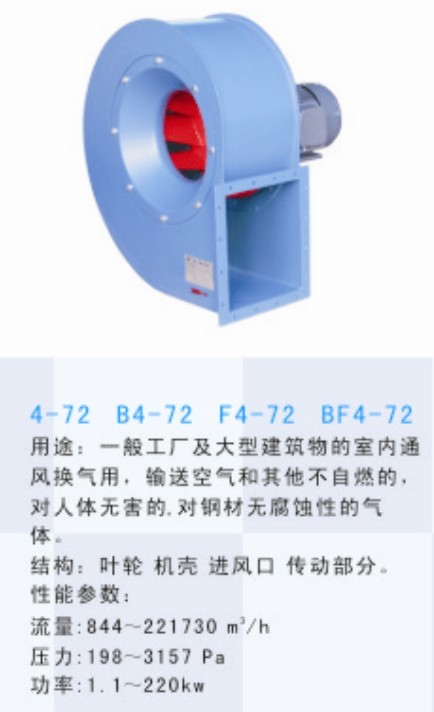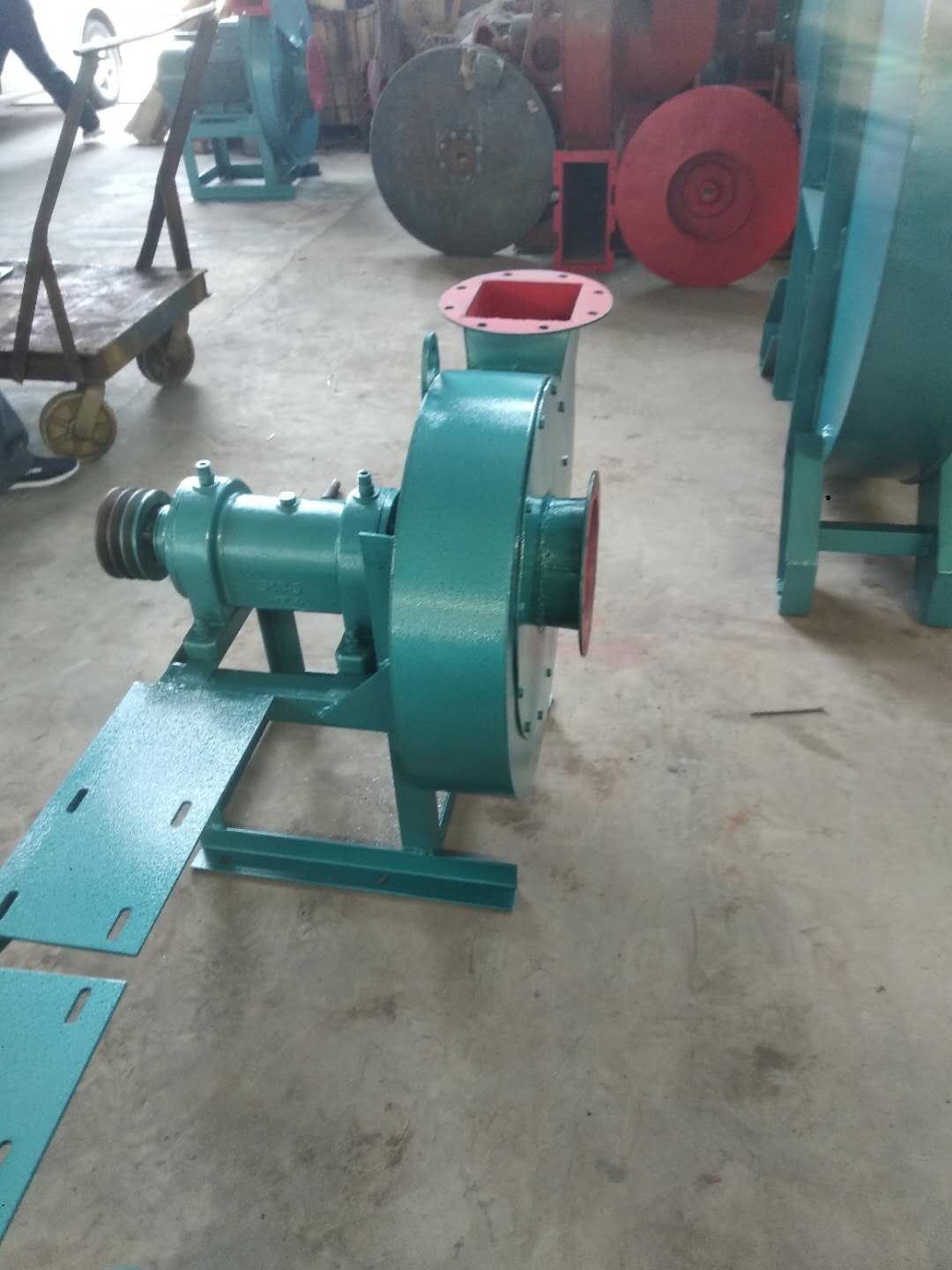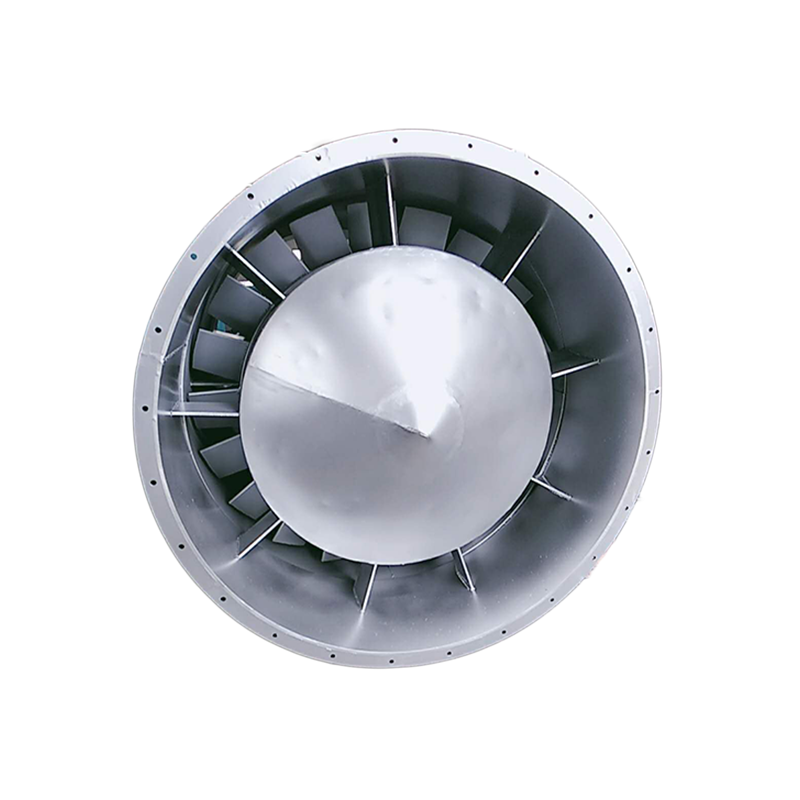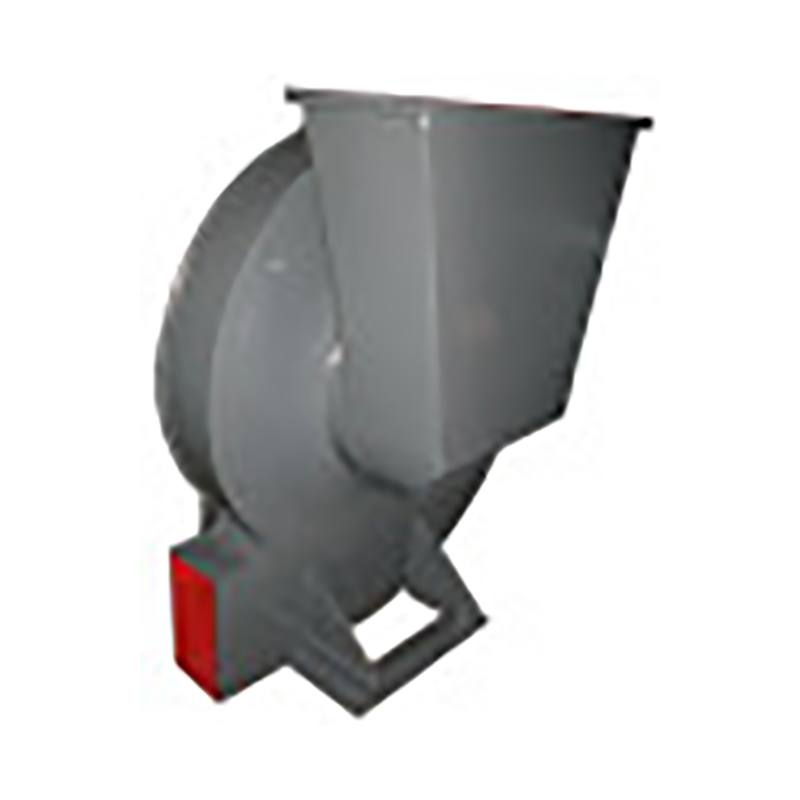
(3) The main faults and causes of the fan may occur during the operation of the fan. For the faults generated, the causes must be quickly identified and solved in time to prevent accidents. Faults in the Operation of 4-72-12 Centrifugal Fan and the Causes Table Fault Name Causes Severe Vibration of Bearing Box 1. The fan shaft is different from the motor shaft, and the coupling is installed askew. 2. The casing or air inlet rubs with the impeller. 3. The foundation stiffness is not enough or firm. 4. Impeller rivet is loose or wheel disc is deformed. 5. The impeller shaft disk and shaft are loose, and the coupling bolt is movable. 6. The connection between casing and bracket, bearing box and bracket, bearing box and seat is loose. 7. The air inlet and outlet pipes of the fan are poorly installed, causing vibration. 8. The rotor is unbalanced. Bearing temperature rise is too high 1. The bearing box vibrates violently. 2. The lubricating grease is poor in quality, deteriorated or overfilled, or contains dust, sand, dirt and other impurities. 3. The tightening force of connecting bolts of bearing cover seat is too large or too small. 4. The shaft and rolling bearing are installed askew, and the front and rear bearings are not concentric. 5. The rolling bearing is damaged. The motor current is too high and the temperature rise is too high. 1. The throttle valve in the air inlet pipe is not closed tightly when driving. 2. The flow exceeds the specified value, or the air duct leaks. 3. The gas density conveyed by the fan is too high. 4. The input voltage of the motor is too low or the power supply is cut off individually. 5. The coupling is improperly connected, the leather ring is too tight or the gap is uneven. 6. Affected by the violent vibration of the bearing box. 7. Affected by deterioration or failure of parallel fans. When the belt slides down, the two pulleys are not in the same plane with each other. Belt runout The distance between two pulleys is too close or the belt is too long.

The fan is allowed to start at full voltage or at reduced voltage, but it should be noted that the current at full voltage starting is about 5~7 times the rated current, and the reduced voltage starting torque is proportional to the square of the current. When the grid capacity is insufficient, the reduced voltage starting should be used. (When the power is greater than 11KW, it is advisable to adopt the step-down starting.) When the fan is in test run, Centrifugal fan company Carefully read the product manual and check whether the wiring method is consistent with the wiring diagram; Carefully check whether the working voltage of the power supply to the fan meets the requirements, whether the power supply is out of phase or in phase, and whether the capacity of the electrical components provided meets the requirements. During commissioning, the number of people shall not be less than two. One person shall control the power supply and the other person shall observe the operation of the fan. If any abnormality is found, stop the machine immediately for inspection; First, check whether the rotation direction is correct; After the fan starts to run, immediately check whether the running current is balanced and whether the current exceeds the rated current; large Centrifugal fan If there is no normal phenomenon, stop the machine for inspection. After five minutes of operation, stop the machine to check whether the fan is abnormal, and start the machine again after confirming that there is no abnormal phenomenon. When the two speed fan is tested, start the low speed fan first and check whether the rotation direction is correct; When starting the high-speed train, the fan must be stopped before starting to prevent the switch tripping and motor damage caused by high-speed reverse rotation. When the fan reaches the normal speed, check whether the input current of the fan is normal, and the operating current of the fan cannot exceed its rated current. If the operating current exceeds its rated current, check whether the voltage supplied to the fan is normal. The motor power required by the fan refers to the higher power required for centrifugal fan and fan box when the air inlet is fully open under certain working conditions. If the air inlet is fully opened for operation, the motor may be damaged. During fan commissioning, it is better to close the valve on the inlet or outlet pipeline of the fan, open the valve gradually after operation until the required working condition is reached, and pay attention to whether the operating current of the fan exceeds the rated current

Forecast the demand structure from the main fields. large Centrifugal fan General ventilation fans (generally small and medium-sized centrifugal and axial fans) are the most widely used, with the largest demand and the largest number of manufacturers. In general, the supply of such products exceeds the demand. Although the demand for special purpose fans (including anti-corrosion fans, high-temperature fans, wear-resistant fans, fire smoke exhaust fans, etc.) is not large, due to the special operating environment, they need to be treated differently, because the main material requirements are special. The biggest feature of Roots blower is that when the pressure is adjusted within the allowable range, the flow changes little, the pressure selection range is wide, and it has the characteristics of forced gas transmission. The main disadvantage is that the noise is large. Centrifugal fan company Through technology introduction, joint venture and self-development, China has launched a three blade roots blower with low noise, which is very popular with users and has a good market prospect. Turbine compressor (including centrifugal compressor, axial compressor and axial centrifugal compound compressor) is an important equipment of major engineering complete equipment, which plays an important role in the national economy. The performance of turbine compressor requires high pressure and large flow. With the large-scale of the complete set of equipment, the turbine compressor parameters are required to be higher and higher. Such as blast furnace smelting plant, large coal chemical plant, large fertilizer plant, large ethylene plant, large air separation plant, natural gas pipeline transportation plant and oil field gas injection plant. The demand for such products accounts for a small proportion of the total fan volume, but because of their importance, complex structure, long manufacturing cycle and high technical content, they have relatively good economic and social benefits. Turbine compressor manufacturing level represents the overall level of the fan industry

When the bearing temperature of the fan is normal, it is ≤ 70 ℃. If it rises to 70 ℃, an alarm should (will) be given if there is an electric control. At this time, the reason should be found out. First, check whether the cooling water is normal? Is the bearing oil level normal? If the cause cannot be found for a while, the bearing temperature rises rapidly to 90 ℃, and if there is an electric control, the alarm and shutdown signal shall be sent again. Tongling Centrifugal fan In the process of fan startup, shutdown or operation, if any abnormal phenomenon is found, it shall be checked immediately. If any small fault is found during the check, it shall be timely found out the cause and eliminated. In case of major fault (such as severe vibration, impact of fan, sharp rise of bearing temperature, etc.), stop the machine immediately for inspection. large Centrifugal fan The lubricating oil (or grease) shall be renewed and replaced one month after the first operation of the fan. In addition to replacement after each overhaul, the lubricating oil (or grease) can be replaced once every 1~2 months under normal conditions, or according to the actual situation. Fans include fans, turbine blowers, roots blowers and turbine compressors, which are divided into 7 categories in detail, including centrifugal compressors, axial compressors, centrifugal blowers, roots blowers, centrifugal fans, axial fans and Ye's blowers

The wet electrostatic precipitator is mainly used to purify water vapor, odor, acid mist and other harmful substances in the exhaust gas discharged by the factory. As an air pollution control equipment, it has also been widely used. let's Centrifugal fan company Understand its system composition together. 1. Composition of wet electrostatic precipitator system. According to its working principle, the control system of wet electrostatic precipitator generally includes high pressure system, water treatment system, low pressure heating and hot air purging system, upper computer system, etc. 2. Design of wet electrostatic precipitator system. (1) large Centrifugal fan High voltage system and wet electrostatic precipitator charge the dust through corona discharge of high voltage system. The charged dust reaches the dust collecting plate under the effect of electric field force, and then the dust is removed by regular scouring. (2) Tongling large Centrifugal fan Water treatment system. This system deals with the problem of secondary water pollution. It is mainly the water discharged after equipment spraying and flushing, which contains a lot of acid substances and fine particles. Direct discharge will cause secondary pollution. The recycling of water in the equipment consists of two steps: neutralization and acid removal, and separation of suspended solids, so that the sewage can be turned into industrial water suitable for spraying. (3) Heating system. The heating system includes insulator incubator heating, hot air purging heating, and the hot air purging system is composed of fan, butterfly valve and heater. When it starts actively, it starts in the order of fan, butterfly valve and heater. When actively closing, it shall be closed in reverse order. (4) Upper computer system. The selected upper computer system is an industrial control computer, and the network front-end computer is used to enable the system to have extraordinary data acquisition and processing capabilities, so as to meet the requirements of wet electrostatic precipitator for centralized management, decentralized control, energy conservation and emission reduction.





